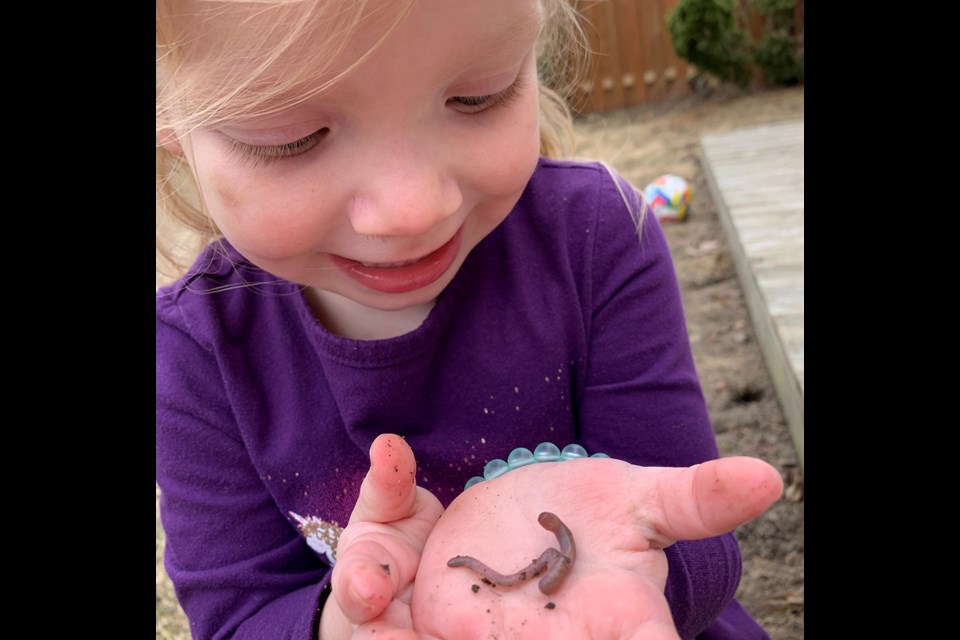Parks and trails have been closed during the COVID-19 pandemic as part of the effort to curb the spread of novel coronavirus and ensure physical distancing – but that doesn’t mean that you can’t get outside and enjoy nature.
Lake Simcoe Region Conservation Authority’s manager of education Nicole Hamley suggests taking a backyard or balcony ‘safari,’ to look for signs of spring.
Use all the senses, starting with sight. “The things you would see are the first arrivers in the garden – the snowdrops the crocuses, maybe even tulips,” Hamley says.
Another early plant is ‘Coltsfoot.’ The plant sends up its yellow flowers first, each looking like a small dandelion on a bare stalk. The leaves, shaped like a colt’s hoof, don’t appear until later in the spring.
It may be an invasive weed species, but the cheerful little flower is welcome bit of colour at this time of year.
“Then bring your eyes up off the ground, and look at the trees and shrubs, where the buds are bursting,” Hamley suggests. Maple trees are among the first trees to respond to warmer weather, as the fat red buds on the end of each twig swell.
Wildlife is also stirring. Grey squirrels are active all winter, but in Spring their activity becomes more frenetic as they hunt for the food caches they buried in the fall.
Chipmunks, awakening from hibernation, scamper through the garden.
If you are lucky, you might see a garter snake “depending on the daytime temperature,” Hamley says, or even one of the earliest butterflies, the Mourning Cloak.
Rabbits, too, are especially active early in the day – very appropriate at Easter time.
Watch for birds - not only the species that have been around all winter, but also migratory birds returning to their nesting grounds.
“From a bird perspective, you may see them if you are lucky, but you are more likely to hear them,” Hamley says, so use your ears on your nature safari.
Cardinals are among the most vocal at this time of year; Mourning doves also “make quite a bit of noise.” And even if you don’t see a downy woodpecker at work, you may hear the tap-tap-tapping as woodpeckers hunt for insects under the bark.
Then there is the Robin, that traditional "first bird of spring."
Actually, robins stick around all year but spring is when they nest, their red breasts visible as they hunt for food. The robin’s song has often been described as sounding like “cheerily, cheer up, cheer up, cheerily, cheer up" – which during these bleak times "is very fitting,” Hamley notes.
Bird song is loudest at dawn, as birds stake out their territories and sing for a mate. Even at night, especially when the moon is full, you may see birds migrating – and hear the calling of ducks and geese.
Birds aren’t the only critters that ‘sing’ in the spring. Amphibians, like wood frogs and spring peepers, join in the chorus at night.
“The spring peeper is a tiny little frog that fits on a loonie, but gram for gram it’s the loudest creature on earth!” says Hamley.
Finally, there’s smell – the smell carried by a warm breeze, the smell of the earth after a spring rain, and finally, the scent of spring flowers.
The LSRCA education team has been busy during the pandemic, working hard to create resources that support online learning, and reconnect families with nature.
This week the team launched a new page on the Conservation Authority website that includes a “learn at home” section, with plenty of suggestions for activities that are both educational, and fun – from “Math Sticks” to simple tree identification, downloadable word searches and the Watershed Heroes Activity Book, and ideas for nature crafts and ‘Ephemeral Art.’
“It’s all built around getting outside,” Hamley says. “Don’t hesitate to go out and see nature!”
There is also a new Facebook group, OutdoorLearningWithLSRCA – filled with videos and ideas, and an invitation to residents to share their own photos and videos.



